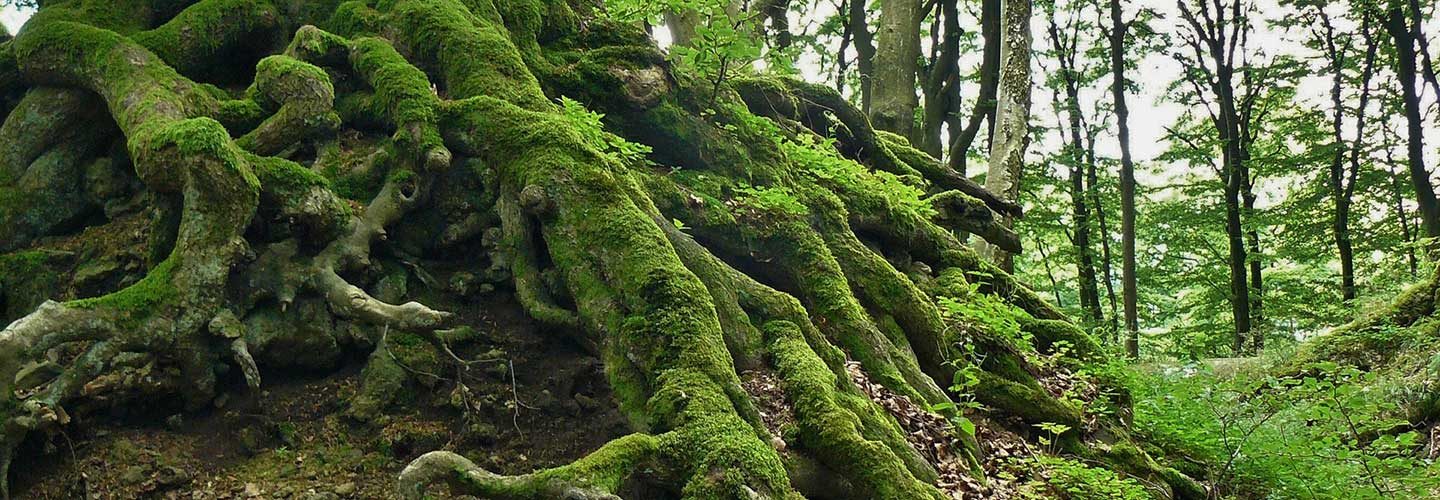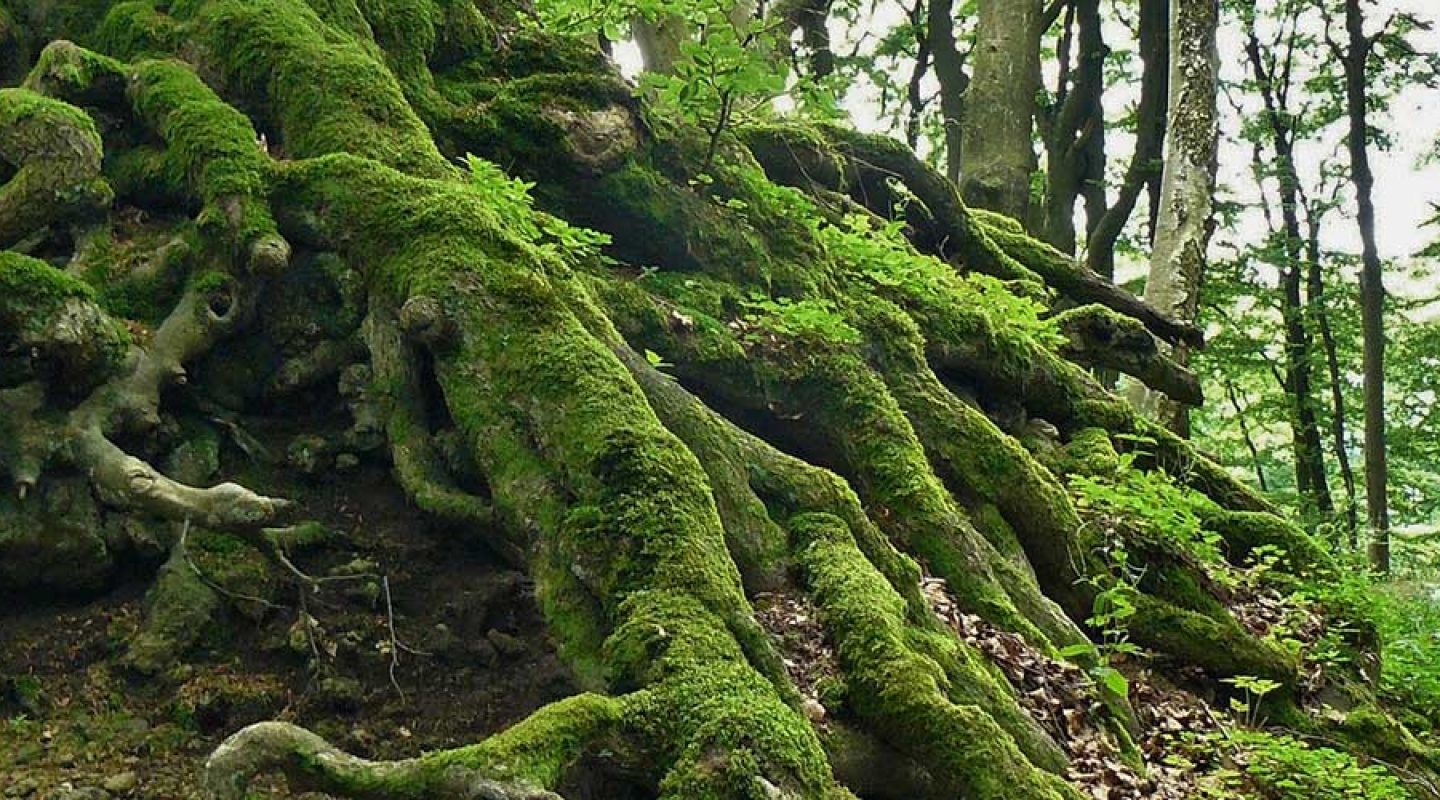Homepage > Uncategorized > Learn from the roots – Positive Psychology and Permaculture
Learn from the roots – Positive Psychology and Permaculture


Highlights:
- Nature developed and refined itself over a period of more than four billion years
- Permaculture was initially a nature-inspired design process for growing an abundance of food, drawing much of its effectivity from understanding and cooperating with nature, and is now increasingly appreciated for ameliorating social systems and interactions
- Permaculture is a way of thinking and acting that is aligned to the way in which nature works
- Representing the transition from mechanical to natural thinking it works with nature rather than against it and is therefore to a surprising extend effortless, regenerative, and productive
- The permacultural way of thinking offers immense benefits for individuals, organisations, communities, and even entire towns and cities
- Trusting nature, aligning our thinking to it, and going with the flow of it people found themselves to have more time, more energy, and improved mental and physical wellbeing
- Permaculture is one of the easiest and most rewarding activities we can engage in to decrease human damage on the planet and even help it regenerate
Permaculture is listening to the wisdom of nature:
If we surrendered to earth’s intelligence we could rise rooted, like trees.
Rainer Maria Rilke, The Book of Hours
How can you grow citrus trees, peaches, and vine at 1500m altitude with an average annual temperature of 4°C? How can you get access to fresh, lush, high quality, local, and organic food, fun and stimulating work-out in nature as well as more meaningful time with your best friends and your family, and safe money on the way? How come, that natural ecosystems are highly productive, resilient, and require very little labour input, while the current source of much of our food, chemical agriculture, is characterised by decreasing productivity, ecocide, and a high susceptibility to diseases and drop outs and therefore a high demand for pesticides and fertilizer? And what does all of that even have to do with positive psychology?
Put simply, by listening to and mimicking the way of nature we can create abundance in our environments. That is to say we lay the groundwork which allows us to strive truly and profoundly. It is therefore complementary to positive psychology and often functions in parallel ways. Nature’s design, if we want to call it as such, developed, refined, and brought itself to perfection over a period of more than four billion years. In contrast, the designs of the societal environments which we currently live in are seldom older than a hundred years, if that, and are, in addition, often profit driven and based on un-reflected assumptions about the world and human nature. This has made them resource intensive, unproductive, and unsustainable. In addition, it represents less than ideal circumstances for us to strive, such as artificial financial pressures, pollution, destruction of the ecological basis of our life, loss of meaningful experiences, and competitive environments. Permaculture might at first seem unrelated from positive psychology but only for as long as we believe to be disconnected from the sources of our food and the ecosystem we live in.
But what are the concrete benefits of engaging in permaculture? In short, (1) in doing so we create the physical environments in which we can profoundly strive. A start can be as simple as replacing ornamental plants by edible ones. By creating abundance around us we free ourselves from economic pressures and increase our mental and physical health. Nature is very generous, by understanding and aligning to its way it is simple to create ecological and social stability. (2) Doing so we get tangible security and tangible wealth. Money provides security only for as long as the majority of people agree to its value. This becomes increasingly clear with the recent financial crises. In contrast, a lush garden in a healthy, biodiverse ecosystem with clean water, air, and soil and a supportive social environment is what tangible security and wealth looks like. (3) Going with the flow of nature rather than against it, we safe time, energy, and money, we decrease pollution, destruction, and biodiversity loss, and we gain wellbeing, safety, and insight.
And doing so is as simple as it is spectacular. We work with, rather than against nature, we observe thoughtfully instead of working thoughtlessly, and we look at plants, animals, and really all elements of a given system in all their functions, rather than treating any one area as a single product system. And these principles can be applied to every aspect of our lives – from easily growing a good part of our food to effectively organising our work or making our neighbourhoods more pleasant, to insightful city management and even social contexts, such as cooperation and leadership.
Permaculture in action
Permaculture is not a rigid toolbox but a way of thinking. With this article we do not aim to exhaustively explain permaculture techniques but to give an idea of the how this thinking works. To understand the value of and need for permaculture, we first need to understand its opposite – monoculture, as it currently represents the source of our food and is one of the main contributors to natural destruction. Industrial scale monoculture embodies maybe the most impressive example of trying to work against rather than with nature. In a monoculture, one grows one type of plant. Every single plant on the field needs exactly the same nutrients, the exact same space, and is vulnerable to the exact same diseases and pests. This in turn leads to a high demand for pesticides and fertilizers. The use of such destroys the former ecosystem, making the agriculture literally addicted to them, quite simply because nothing would grow otherwise anymore, let alone a monoculture. This, however, leads to a number of unfortunate cascading effects in the ecosystem. The primary work of pests and wild herbs is to heal and reintroduce the natural, balanced polyculture. When the pests are dead, their natural predators disappear. By the time the pests come back the predators are gone, reinforcing the ‘damage’ of the pests, in turn leading to an augmented use of pesticides. The pesticides, however, are also killing many of the other species in the area, making the ecosystem even more vulnerable. In addition, due to the application of herbicides, tilling, and the lack of polyculture the root system and humus layer disappear. As a result, the rain cannot infiltrate into the soil and regularly washes away the soil. The soil, however, is the very basis of our life, as it allows the stable climate conditions we still enjoy and as its microbial life makes the nutrients available for the plants that we like to eat. The resulting decrease in fertility increases the fertilizer demand, of which most is then, due to the impoverished soil, spilled away damaging the marine ecosystems further down the water cycle. As a result, we currently burn about 12-16 calories in order to produce one calorie of food. This is, in short, what happens when we don’t listen to nature and work against it.
Luckily, there are alternatives, one of them being permaculture. Already by simply stopping to till and by planting several different plants together we can turn this entire effect around, regenerating the soil and the ecosystem with every step. Different plants often repel the different pests from each other, they need different nutrients, make nutrients available for each other, and serve the different functions of the ecosystem. The result is a highly productive, resilient, and self-regenerating system. After the initial set up, you will receive more food every year with decreasing labour input until you live in an actual oasis of lush, nutrient rich food. Imagine sitting in your garden surrounded by grapes, peaches, kiwis, and cherries – all growing for free, all by themselves, increasing soil fertility all the way along.
In addition, it allows us to make the best possible use of space, for example, by stacking in time and place, e.g., growing mushrooms, herbs, vegetables in between fruit trees and having grapes or kiwis climbing up the trees. In addition, the plants help each other and reduce both evaporation and percolation.
And you can stack even further, for example, by combining gardening, time with friends, looking after kids, exercise, and sharing knowledge, seeds and stories, thereby increasing biodiversity, improving your health, decreasing monetary pressures, building a habitat for all sorts of animals as well as tangible wealth and security, and decreasing your dependency on destructive agriculture.
We’re only truly secure when we can look out our kitchen window and see our food growing and our friends working nearby.
Bill Mollison, co-founder of permaculture
The family Dervaes has been doing exactly that and became quite famous in doing so. In their 370m² garden, 16 km from downtown Los Angeles, they managed to grow over 90% of their food, over 400 varieties of plants, saved over $75,000 per year, and made more than $20.000 in sales from their garden alone. And following the same principles people are actually managing to restore highly degraded land – link – and even managed to re-green the desert – link -.
This article continues in part 2 – link – where we will explore what social permaculture is, how it works, and ways on how to get started.
If you still want to find out how to actually grow the grapes at 1500m altitude, check out the work of Sepp Holzer – link -.
For a deeper dive
Charles Eisenstein
Transition Towns
Daniel Wahl – Designing Regenerative Cultures
Masanobu Fukuoka
Permavenir
Family Dervaes – http://www.bioalaune.com/fr/actualite-bio/23792/famille-americaine-fait-pousser-3-tonnes-de-nourriture-bio-son-jardin
http://urbanhomestead.org/about/by-the-numbers/
Fermes d’avenir
L’éveil de la permaculture
Mon jardin en permaculture
Biomimicry
Wu Wei
References
Allen, K. E. (2018). Leading from the Roots: Nature-Inspired Leadership Lessons for Today’s World. Morgan James Publishing.
Hallmann, C. A., Sorg, M., Jongejans, E., Siepel, H., Hofland, N., Schwan, H., ... & Goulson, D. (2017). More than 75 percent decline over 27 years in total flying insect biomass in protected areas. PLoS ONE, 12.
Mollison, B. (1991). Introduction to permaculture. Tasmania, Australia: Tagari.





